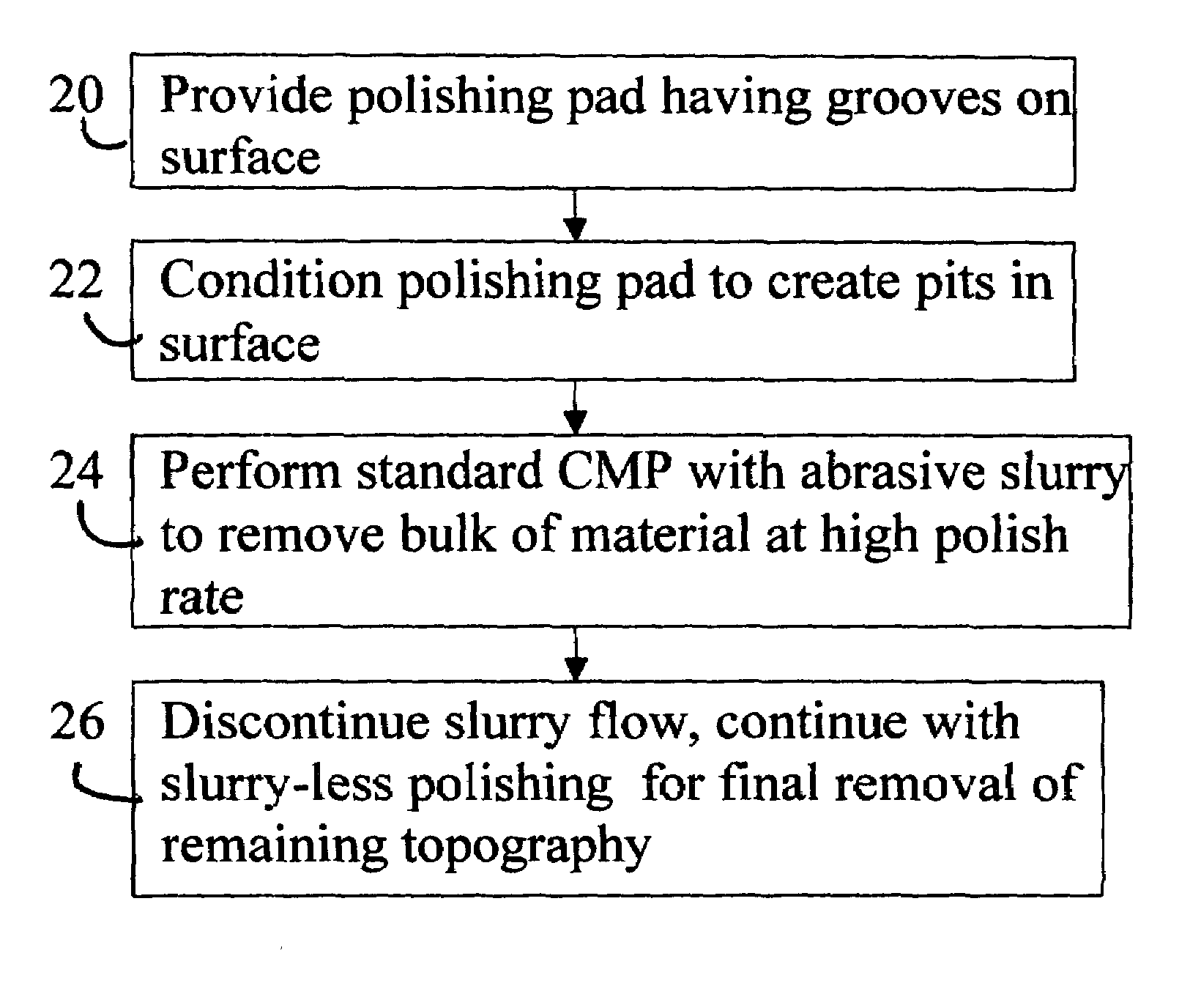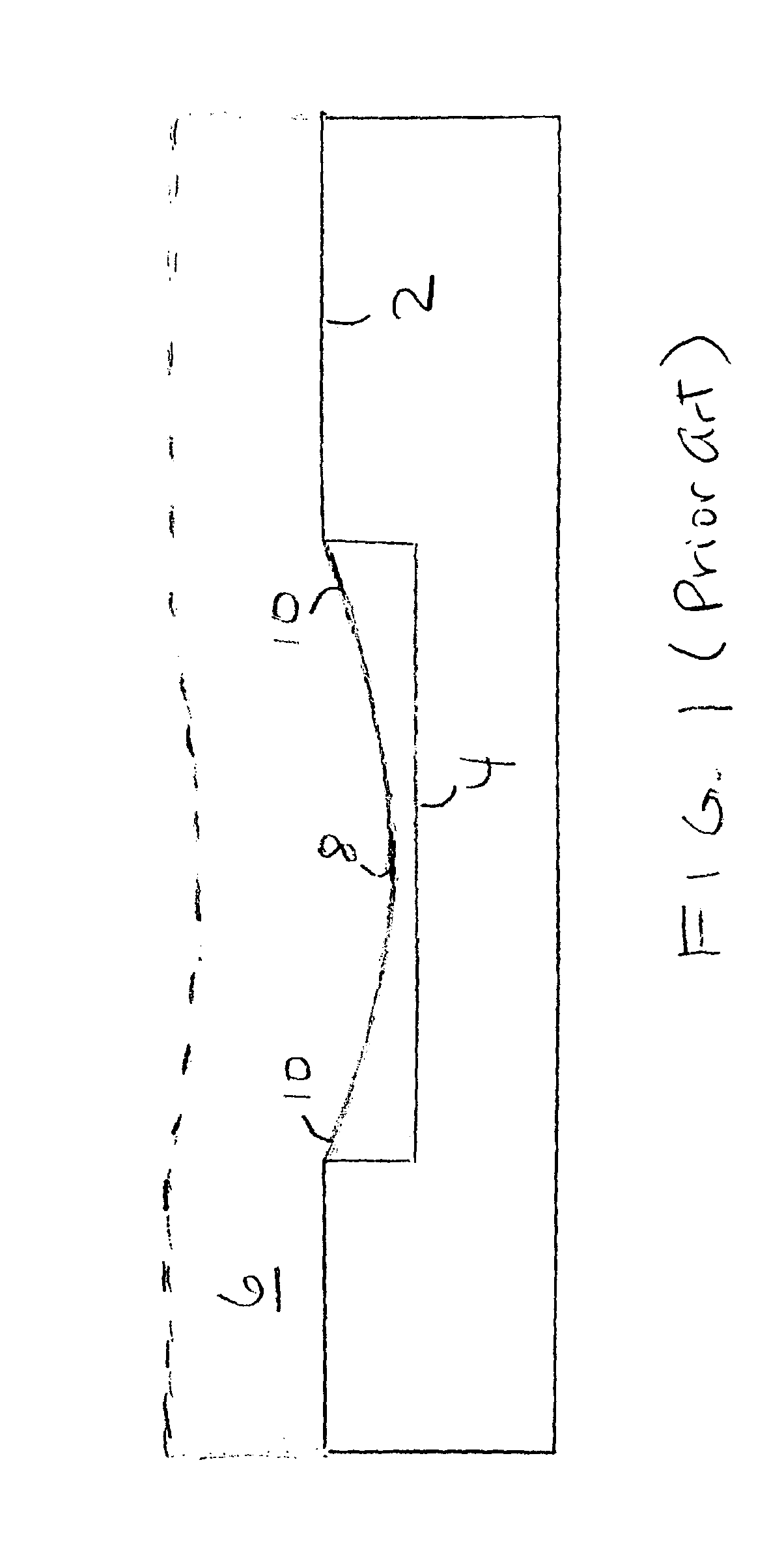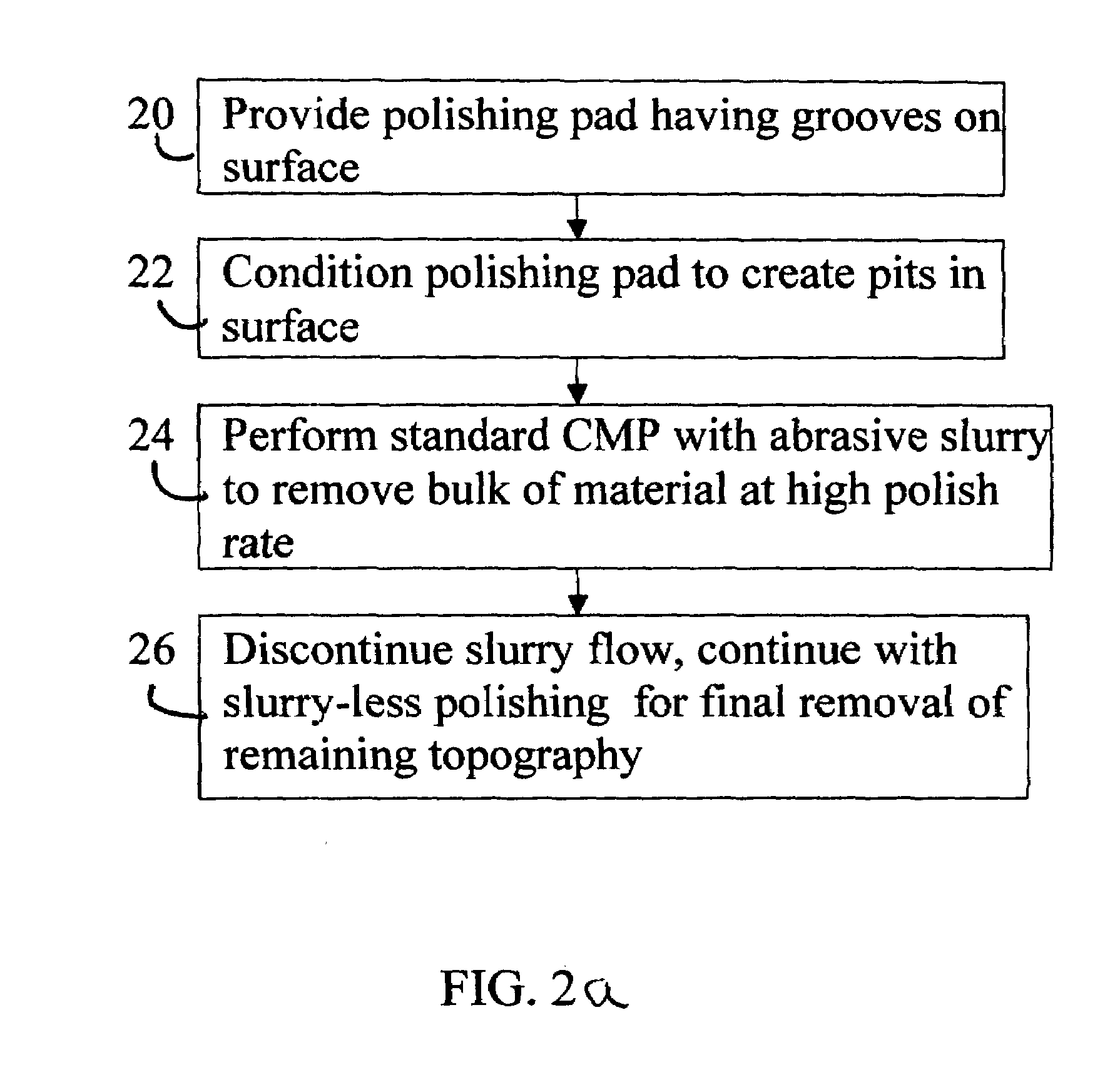Slurry-less polishing for removal of excess interconnect material during fabrication of a silicon integrated circuit
a silicon integrated circuit and interconnect material technology, applied in the field of chemical mechanical polishing, can solve the problems of affecting the quality of silicon integrated circuits, etc., and achieves a large pattern feature and high planar topography.
- Summary
- Abstract
- Description
- Claims
- Application Information
AI Technical Summary
Benefits of technology
Problems solved by technology
Method used
Image
Examples
Embodiment Construction
[0017]Our inventive process includes a two phase polish, the first of which utilizes a slurry, and the second of which is slurry-less. During the first phase utilizing slurry, fine abrasive particles are embedded into the polishing pad. During the second slurry-less phase, the fine embedded particles and the chemicals adsorbed / absorbed into the pad provide a very uniform final polish with much reduced dishing.
[0018]The process flow is shown in FIG. 2a and illustrated in FIG. 2b.
[0019]In step 20, a polyurethane polishing pad 200 having grooves on the polishing surface is provided. The IC1000 pad, commercially available from Rodel, Inc., having k-grooves, is a preferred alternative. Pads with other shaped grooves would also be acceptable. In fact, if step 22 is extended, pads without grooves will also be an alternative.
[0020]In step 22, the polishing pad is conditioned, by way of example by using a #20–200 grit diamond disc, to create and / or sustain a large number of pits or cavities...
PUM
| Property | Measurement | Unit |
|---|---|---|
| pressure | aaaaa | aaaaa |
| pressure | aaaaa | aaaaa |
| diameter | aaaaa | aaaaa |
Abstract
Description
Claims
Application Information
 Login to View More
Login to View More - R&D
- Intellectual Property
- Life Sciences
- Materials
- Tech Scout
- Unparalleled Data Quality
- Higher Quality Content
- 60% Fewer Hallucinations
Browse by: Latest US Patents, China's latest patents, Technical Efficacy Thesaurus, Application Domain, Technology Topic, Popular Technical Reports.
© 2025 PatSnap. All rights reserved.Legal|Privacy policy|Modern Slavery Act Transparency Statement|Sitemap|About US| Contact US: help@patsnap.com



